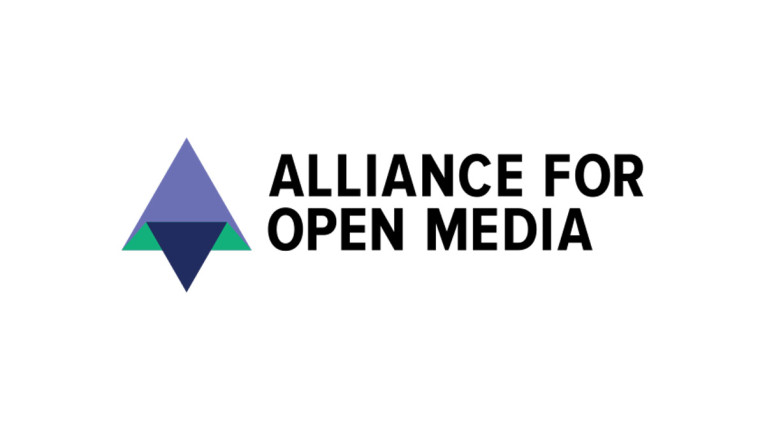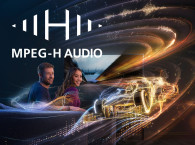
According to AOMedia, advancements in immersive spatial audio are influencing the audio expectations of consumers. However, to enable wide-scale ecosystem deployments, OTT services and hardware device vendors will benefit from license-free spatial audio technologies. Similarly, creators seek formats with immersive audio mixing options that would easily work with the current streaming and playback systems. To solve this "challenge," the Alliance for Open Media announced the release of the Immersive Audio Model and Formats (IAMF - https://aomediacodec.github.io/iamf/) container specification, the organization's first-ever audio container specification to be offered under AOMedia’s royalty-free license.
"IAMF is designed to enable creatives to revolutionize immersive audio experiences across a myriad of applications, from streaming and gaming to augmented reality and virtual reality, as well as traditional broadcasting," the organization says.
"Whether broadcasting live sports, or binging on a favorite show, immersive audio is becoming a bigger part of consumers’ daily lives. AOMedia developed IAMF specifically for the Internet audio era, paving the way for companies to make immersive audio part of the devices, products, and services that consumers love. As a result of these efforts, IAMF is a codec-agnostic container specification that can carry information for playback time rendering algorithms and audio mixing," the organization announces.
“IAMF represents a significant step forward in open immersive audio standards. Not only does it cater to diverse use cases, including streaming, gaming, augmented reality, virtual reality, and broadcasting, but it will also provide creators with the tools to craft immersive audio experiences that captivate audiences. As an open media project, IAMF is easily accessible to implementers worldwide, it fosters innovation, empowers developers, and ensures the broad availability of rich, immersive audio experiences that consumers want," says AOMedia Chair Matt Frost (Google). "I’d like to thank the Storage and Transport Formats (STF) Working Group for their work on this audio specification. IAMF continues to evolve, and it is exciting to see how this working group is already thinking of the features for the next release."
The strange thing about this IAMF Audio Specification is that it seems to directly describe the already existing MPEG-H 3D audio specification ad-verbatim, while apparently criticizing the Dolby licensing model. By claiming to offer a "Spatial Audio for All Devices" solution, IAMF is only different because it fundamentally relies on channel-based, scene-based, and ambisonics spatial audio - not object-based audio approaches. While at the same time claiming that it could work on "a wide range of devices," including headphones, mobile phones, televisions, soundbars, home theater systems and web.
"This versatility ensures a consistent, high-quality audio experience across various platforms," AOMedia claims. Another important aspect of differentiation would be its ability "to signal rendering algorithms, such as EAR and BEAR, for playback in loudspeaker layouts and headphones."
"Creators can dive into IAMF-compliant immersive audio content creation with the existing open source plugins such as the EAR Production Suite, which includes renderers for multi-speaker layouts and binaural monitoring, compliant with IAMF specification guidelines. IAMF’s ability to carry and include multiple audio mix configurations enables creator and user controllable loudness adjustments for different playback preferences. In the near future, the AOMedia open source reference software will add an IAMF encoding tool for compressing various sound mixes to IAMF," the organization states in the IAMF announcement.

The IAMF specification and reference software decoder, complete with test streams, are accessible on AOMedia’s GitHub. What will be the traction for this proposal is unknown, but it's clear that too many of the AOMedia claims are dubious, to say the least. Such as claiming the ability to "properly decode and interpret" 3D audio information, independently of the type of audio systems. The recipe, IAMF suggests relies on the ability of such devices to automatically adjust reproduction to the needs of the signal, which is a big question mark about the technologies that would allow for channel virtualization or room compensation, as examples.
The simple fact that IAMF is offered as "an open-source standard" doesn't make it ideal or even convenient for manufacturers to adopt it, and much less for creators to rely on it - which has been precisely the challenge for the adoption of the existing MPEG-H format. Not paying licensing fees might seem appealing for a few companies, but the involvement of repeated offenders such as Google in this type of initiative, naturally makes us question on what exactly will be the real price for the "openess".
Anyway, the IAMF proposal is now public, and it remains to be seen which companies will use it - if any - and for what purpose.
https://aomedia.org







